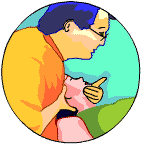Osteopathy
Created | Updated May 31, 2006

Osteopathy is a system of diagnosis and treatment designed to provide pain relief for the body's structural and mechanical problems.
Founded in America in the 1880s, osteopathy was brought to the UK in 1914 when Dr Martin Littlejohn started the British School of Osteopathy1.
It's popularity grew slowly at first, but there has been rapid expansion in the last two decades, while further expansion has been helped with an Act of Parliament passed in 1993 which ensures maintenance of academic and ethical standards. The Osteopath’s Act also makes it illegal for any person without the appropriate education or qualification to call themselves an osteopath. This is so that you, the patient, can be sure that you are being treated by an osteopath who has been properly trained. Osteopathy is the first complementary therapy to have undergone statutory regulation by Parliament. This gives an osteopath similar status to a doctor or dentist and guarantees a patient a high level of protection.
How Does it Work?
Osteopathy is based on the principle that structure governs function, this means that when something is wrong with the body it will not work as well as it should. Trainee osteopaths undergo an extensive four-year degree course including anatomy, physiology and pathology of the body. This knowledge enables an osteopath to analyse your problems and diagnose your complaints, using a variety of clinical skills, backed-up where necessary by x-rays and other tests.
What happens when you visit an osteopath
- Your patient history will be compiled. You will be asked a series of detailed questions about the reason you have come for treatment as well as your general health. If you are taking any medication, you will need to bring the details with you.
- Then the osteopath will look at the condition of your muscles, tendons, ligaments and joints, paying particular attention to your posture. You should be aware that you will be asked to undress to your underwear for the examination.
- When a full diagnosis has been made, your osteopath will explain the problem and then start treatment. This is usually gentle and rarely causes pain or discomfort. If necessary you will be advised on how to prevent the problem recurring.

